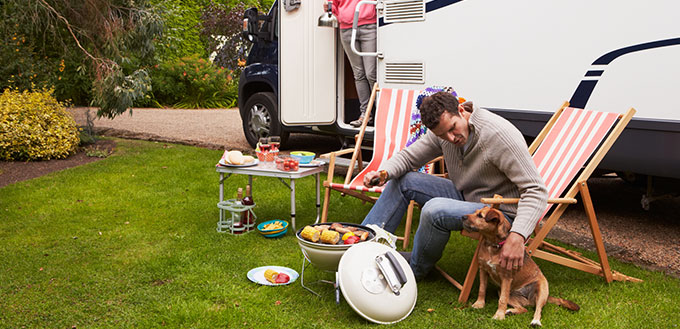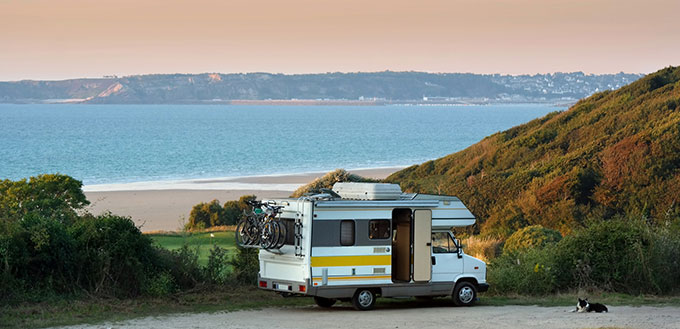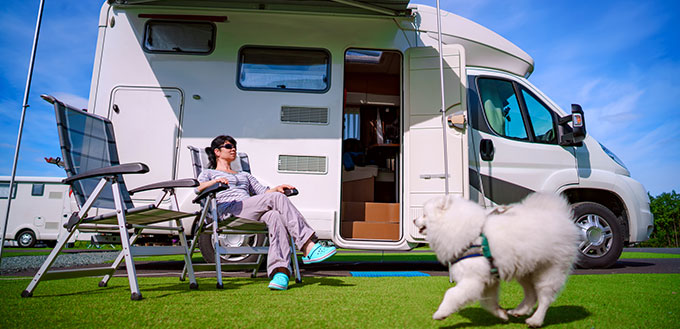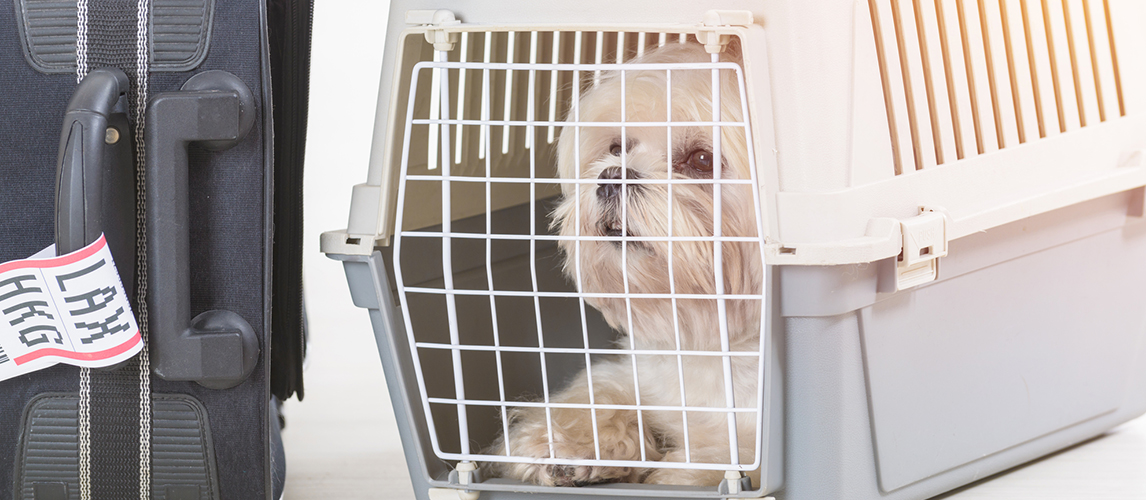Traveling and enjoying the vastness of the country does not have to mean leaving your furry legged companion behind. With a little planning and a few accessories, your dog can safely enjoy your adventures too and help you build memories that will last a lifetime. There is little else out there that gives you the same feeling of freedom and adventure as owning an RV. The ability to drop everything and travel at a moment’s notice. To explore out of the way places alone or with friends. At least that is the dream. Once you have responsibilities, such as jobs, children, and pets, things can be a little more complex. However, that doesn’t mean an end to the freedom of the open road. You can still enjoy late nights sat under the stars in the middle of nowhere or listening to the waves crash over the beach as the sun rises. In this article, we explore how RVing with dogs can be done safely so that you can still enjoy all that the open road has to offer.
Planning and Preparation
There is an element of planning for every journey, but when you are RVing with dogs, planning becomes even more important. Firstly, you might want to consider the pros and cons of adding a doggie camper to your party. Not all dogs enjoy time on the road and not all RV parks are dog friendly. This might affect where you go and how much time you spend camping out. They type and amount of planning that you need to do will greatly depend on where you are going and how long for. If it is just a few days, then it might just involve ensuring that you have enough food, their bowls, bedding, waste bags, and their leash. If you are planning a longer RVing trip, then you might need to include their brush, dog crate, and sunscreen for dogs. You should also check that their vaccinations are up to date, that you have enough medication if it is required, and that you know the numbers and locations of veterinarians on your route or new your destination.
Update your Pet’s Info
Regardless of how long you are staying away from home, it is vital that your dog’s information is up to date. Make sure that they are chipped or have suitable ID tags on their collars and that the contact details are correct. Also, ensure that you carry a copy of your dog’s information on you when you undertake RV travel with dogs. Should the worst happen, and your dog slips their leash or bolts out of the RV door, this will help you find them or retrieve them if they are found by someone else. It never hurts to ensure you have an up to date photograph of your pup either. It is much easier to show a photo to people than it is to try and describe your dog and what makes them different from others of the same breed.
Go for a Practice Run
How well does your dog travel? Does your furry friend go in a vehicle regularly or will being on the road be a whole new experience for them? Have you considered RV pet safety as part of your set up? If they have limited experience of traveling or you are unsure that your RV is pet friendly, then starting your adventure with a month-long road trip might be a little too much for them. Start small with a short trip. Try a day trip to a local beauty spot with the family. If this goes ok, then try an overnight trip and work up from there. Remember, dogs can suffer from motion sickness, so if they are new to traveling in a vehicle, you need to be prepared for this possibility. Not all dogs are suited to life in an RV. If your dog is a constant barker or is uncomfortable around other people or other dogs, they will find living in RV parks challenging. Socializing your dog is a must before you consider taking them on a trip. Once you reach your destination familiarize them with their surroundings and introduce them to your neighbors.
You May Also Like: Portable Dog Fence for RV
Keep them Secure
If you travel with your dog in a car, then ensuring that they are safe and secure for the journey is probably second nature to you. However, a lot of people fail to take this step when it comes to RVing. It may be tempting to allow your dog to roam free in the RV while you are driving, but this is very dangerous. If you need to stop suddenly, they could be thrown into something with considerable force, leading to any number of impact injuries. If you are involved in an accident, then there is the risk of them running off, getting injured, or even causing injury to others in the RV. Dogs can also be a distraction when driving. If your dog decides to wander up front while you are on the move, it could cause you to lose concentration or take your focus off the road. It is much better to secure them to a seat in much the same way you would for a car journey.
Don’t Forget to Take Breaks
Traveling is tiring, not just for you but also for your dog. Too long sat in the same position with very little interaction with not result in a very happy pooch. Plan rest breaks on your journey and give them time to stretch their legs. Depending on where you stop, take them for a walk or play fetch for a while to stimulate their minds and wear them out a bit. Ensure that they have access to a fresh water bowl and that they have time to relieve themselves during stops. Don’t forget to clean up after them before you set off again.
Know the Rules
If you are planning on stopping at an RV park or campground, ensure that you know their rules on pets. Check that the park is pet friendly and familiarize yourself with what is expected of you while you are there. Basic considerations will include whether your dog needs to remain leashed while you are on the site and knowing whether you can leave them alone in the RV. Remember that you are responsible for your dog’s behavior while you are parked up and try to be good neighbors. Don’t let your dog harass other campers. If you do leave them in the RV be mindful of the amount of time you are gone for and how much your dog barks while you are gone.
Watch the Temperature
One of the most important tips for RVing with dogs is to regularly monitor the temperature inside the RV even during seemingly mild weather. The inside of your motorhome can get very hot, very quickly. While you are driving, you can deal with the heat using AC or by opening the windows. If it is still too hot, take a break and find some shade for a while. Once you are parked up, make sure you have a cool spot for your dog to relax in and plenty of water available. Remember if you are uncomfortable inside the RV there, then it is definitely too hot for dogs.
Be Wildlife Aware
Dogs, by their very nature, are inquisitive. This can get them into a lot of trouble at times. When you are RVing with dogs, chances are you will come across a lot of wildlife. Keep your dog leashed if you are unsure as to how they might react to animals that they are not used to. If you are visiting a national park, ensure that it is dog friendly, that you follow the guidelines and park rules regarding your dog, and always keep a watchful eye on them. Remember it is not just other animals that you need to be aware of. Depending on where you are RVing ticks can be a major issue. You should check your dog’s skin and coat after any excursion. Some plants can also be toxic to dogs, so if you are unsure, don’t let your dog too close, and if they do ingest anything get advice from a veterinarian as soon as possible.
Related Post: Dog Crates for Truck Beds
RVing with dogs can be an enjoyable and fulfilling experience. However, to ensure that this remains true, you should know your dog well and only travel within their comfort zone. You can always increase the duration of your trips over time as they become accustomed to life in an RV. By following the tips for RVing in this article, you can ensure that you and your dogs have a great time and that your dog is eager to go on its next trip.










